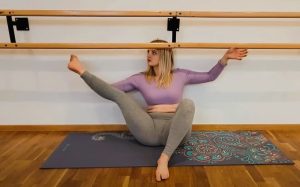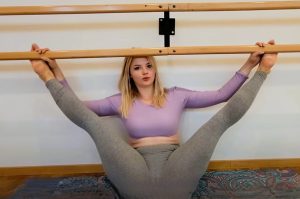
Maintaining flexibility is essential for overall health, mobility, and injury prevention—regardless of your age or fitness level. Whether you’re an athlete, a dancer, or simply someone looking to improve posture and reduce stiffness, incorporating exercises like shoulder rolls, contortion-inspired stretches, and basic gymnastics flexibility routines can transform your movement and daily comfort.
1. Shoulder Rolls – The Foundation of Upper Body Mobility
Shoulder rolls are a simple but highly effective movement that helps relieve tension, improve circulation, and increase the range of motion in your shoulder joints. Start by standing or sitting upright. Slowly roll your shoulders forward in a circular motion for 10 repetitions, then reverse the direction. Be mindful not to rush—focus on controlled movements and deep breathing.
This movement is especially helpful for people who spend hours hunched over desks or screens. By regularly doing shoulder rolls, you can combat poor posture and reduce the risk of developing shoulder and neck stiffness.

2. Contortion-Inspired Stretches – For Deep Flexibility
While contortion may seem extreme, many of its stretches are accessible to beginners when approached gradually and safely. These exercises emphasize spinal flexibility, hip openness, and muscle control.
One effective stretch is the bridge pose, where you lie on your back, place your hands beside your ears, and press upward into an arch. This stretches the chest, shoulders, spine, and hip flexors. Another great stretch is the cobra pose, which focuses on extending the spine and opening the heart.
It’s important to warm up thoroughly before attempting deep backbends or splits. Use props like yoga blocks and don’t force your body. With consistency and patience, your flexibility will naturally improve.
3. Gymnastics Stretches – Building Strength and Range of Motion
Gymnasts are known for their incredible flexibility, strength, and control. Many of their warm-up routines are excellent for everyday flexibility training. Key areas include hamstrings, hip flexors, shoulders, and the spine.
Leg swings, toe touches, and pike stretches are good starting points. The straddle stretch improves inner thigh and lower back flexibility, while arm circles and shoulder dislocations with a resistance band or stick help build shoulder mobility and strength.
Make sure to hold each stretch for 20–30 seconds and repeat for multiple rounds. Always breathe deeply, relax into the stretch, and avoid bouncing, which can lead to strain.
Tips for Safe and Effective Flexibility Training
-
Warm up before stretching (light cardio like jumping jacks or a brisk walk).
-
Stretch consistently—at least 3 to 4 times per week for best results.
-
Don’t push into pain. Discomfort is okay, but sharp pain is a sign to stop.
-
Stay hydrated and get adequate rest for recovery.
Conclusion
Incorporating flexibility exercises like shoulder rolls, contortion-inspired movements, and gymnastics stretches into your routine can enhance your mobility, posture, and overall physical performance. Over time, your body will become more supple, agile, and resilient—making everyday movements easier and more enjoyable.

